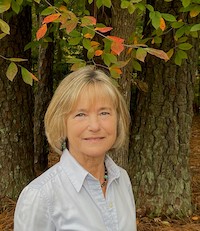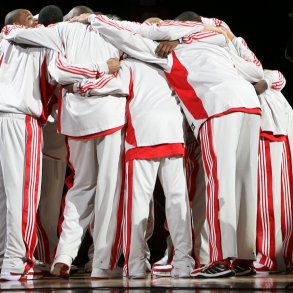Note from Enlivening Edge: This article is especially meaningful in light of the upcoming EE Community Conversation April 20 reflecting together on self-care. Register by April 15 to receive access information.
By Betsy Sheppard for Enlivening Edge Magazine
All life forms seek to grow toward higher and wider reaches of their own potential, including humans and organizations made up of humans. This evolutionary, aspirational process is how life works until we interfere and try to control it.
In today’s modern society, we are over emphasizing some aspects of being human while actively suppressing other aspects that don’t fit accepted norms for who and how to be. This under-utilization of innate human qualities is a hidden barrier to personal and organizational thriving.
If we stop to deeply consider what being human together really means, a window of new possibilities appears that expands individual and collective potential in unimaginable ways.
The “Wise” Species
Homo Sapiens, as our name indicates, has an amazing intellect. Humans have the capacity to imagine and create things that do not exist, to adapt and make sense of the world in increasingly complex ways, and to love and care for one another when there is no personal benefit and even a risk of harm. We have done and continue to do many incredible things.
Humans also have a habit of limiting their own potential and the potential of others. We can reject aspects of our own humanity and pretend to be something we are not. We hide parts of ourselves we do not like. We run away from our own brilliance when we think it is unsafe to reveal it to others. We harm others due to our own self-doubt and insecurity.
Humans are social beings. Organizing so we can live and accomplish things together is an essential aspect of our survival. Today, the beliefs we hold on to about how to organize are preventing many organizations from adapting to meet the challenges they face. The prevailing industrial era management philosophy that imposes order and control, that sees people as resources with some more valuable than others, and that relies on reward and punishment for motivation is stifling potential.
“In most organizations, everyone is doing a second job no one is paying them for ─ spending time and energy covering up their weaknesses, managing other people’s impressions of them, showing themselves to their best advantage, playing politics, hiding their inadequacies, hiding their uncertainties, hiding their limitations.” Robert Kegan and Lisa Lahey, An Everyone Culture”
What if organizations adopted a new management philosophy and a new approach to personal growth that sees everyone as inherently intelligent, creative, self-reflecting, self-correcting and self-accountable?
Loving and accepting ourselves
We are all much more than who we allow ourselves to be. Personal growth is usually seen as either fixing what is wrong with us or adding more of what we are lacking—more skills, credentials, external recognition, status, etc. Personal growth and maturity are more accurately viewed as removing barriers to reconnect with what is already there within us.
Cultural norms begin shaping our self-image at a very young age. Over time we become disconnected from our true nature as unique and perfectly imperfect human beings. We start to limit our expectations and conform to what others expect us to be. When we fall short and disappoint others we learn to suppress and hide parts of ourselves. Today’s culture of perfection, comparison, and personal achievement fuels feelings of inadequacy that erode self-belief.
True growth and maturation mean learning to accept yourself, all parts of yourself, so that you can bring more of your potential into the world.
“The process of becoming the person we’re made to be demands that we first learn how to authentically belong. If there’s any part of ourselves that we can’t or won’t make room for— if any part doesn’t belong—then the truth is, no part fully belongs”. Christopher Heuertz, The Enneagram of Belonging
Deep and complete self-acceptance enables an unshakeable, unconditional sense of belonging in the world that gives us the courage to embrace and experience life more fully. We become comfortable with pain and joy, wonder and despair, confusion and clarity, doubt and determination, playfulness and steadfastness, and all the qualities and complexities of being fully human.
Being Human Together
Imagine being at work without the need to defend and protect your self-image? How might your daily interactions be different when you are not afraid of others showing you up or cutting you down? How would you treat others when you embrace their humanity as well as your own?
Instead of hiding imperfections and mistakes, you maintain faith in your capacity to learn and evolve. Instead of avoiding uncertainty and confusion, you explore it to find new possibilities. The dynamics of how we show up and engage with others at work begins to shift away from fear and toward greater trust, transparency, truthfulness, and courage—exactly the type of environment necessary to thrive in complexity and rapid change.
While speaking at a “MindShift – Growth That Matters” gathering, Amy Edmonson, author of The Fearless Organization, described psychological safety as, “it’s simply a kind of shared sense of responsibility and openness, and willingness to be the fallible human beings that we all are.”
Daily interactions are the lifeblood, the sustaining energy of an organization. When these interactions are more real and more meaningful, it expands the collective intelligence, the field of awareness of the organization. The vitality, aliveness, and creative capacity of the organization blossoms in amazing ways.
Remembering what we’ve forgotten
Like finding a shipwreck in the depths of the ocean, recovering parts of ourselves that have been buried under years of cultural conditioning is not an easy task. Fortunately, there is profound wisdom residing in our bodies that we can access to guide the journey of self-discovery.
Archetypes, as defined by Carl Jung, are universal patterns of instinctual human behavior. They provide a map and clues of the unconscious territory enabling us to bring forth this hidden wisdom into conscious awareness. In their most primal form, Archetypes represent essential energies or elements of the human experience. They include:
- earth element (compassion, connection, loving kindness)
- fire element (determination, focus, discipline)
- water element (resilience, creativity, intuition)
- light element (presence, playfulness, wonder).
These elements are like primary colors to mix and match helping us develop a more inclusive, secure, integrated self-image.
With the archetypal elements as our map, we can more easily see the human qualities we are over-emphasizing as well as the qualities we are avoiding or actively suppressing. We can also find clues about beliefs and habits that we need to let go of. Individual fears and false assumptions follow predictable patterns based on idealized cultural expectations—standards we can never to live up to that make us feel not good enough.
For example, over-reliance on a rugged cowboy or hero persona can shut down caring and deep connection. A woman raised to always be a “good girl” lavishes kindness and caring on others at the expense of her own self-determination and individual expression. A creative business founder may resist the discipline and focus needed to run a business, fearing a loss of freedom and creativity.
An essential aspect of personal growth is learning to balance and integrate natural tensions—the yin and yang of the human experience. How to be loving and caring while remaining strong and determined. How to remain hopeful and optimistic while dealing with the harsh realities of life. As we become more integrated within, we can move beyond individual thinking and desires, to understanding the needs and perspective of others, to considering the impact of our behavior on the entire organization as well as the world around us.
When individual development is aligned collectively toward a more mature, more complete expression of shared humanity, the organization and the people in it can accomplish much more than they ever imagined.
What’s possible?
The key to individual and organizational thriving in an increasingly digitized, complex, and rapidly changing world is far simpler than we think. But simple does not always mean easy.
The success of the past often blinds us to future possibilities. We become afraid of losing what we have. Personal growth means entering the open, untethered space of uncertainty, vulnerability, and emotional exposure. It feels risky and uncomfortable. Growth that matters requires the courage to see ourselves and to see others with fresh eyes.
There is comfort and strength in knowing that the journey of personal and collective transformation is not uncharted territory. There is wisdom we can rely on to guide the way. The human capacities we need to flourish are within each and every one of us waiting to be expressed.
“All of us are struggling together toward a time when the human spirit can find more room for itself in the societies we create. We are all participating in enlarging the spaces in which we together dwell, so that they might hold more of the greatness of each of us.” Margaret Wheatley, Consumed by Either Fire or Fire: Journeying with T.S. Eliot

Betsy Sheppard is the Founder of EAS Ventures, an organization devoted to cultivating human potential.
She is the creator of an innovative App that supports structured, guided reflective practice in the direction of becoming fully human.
Her areas of expertise include systems analysis, process and organization design, developmental psychology, and experiential learning.
Featured Image by Tasy Hong from Pixabay




